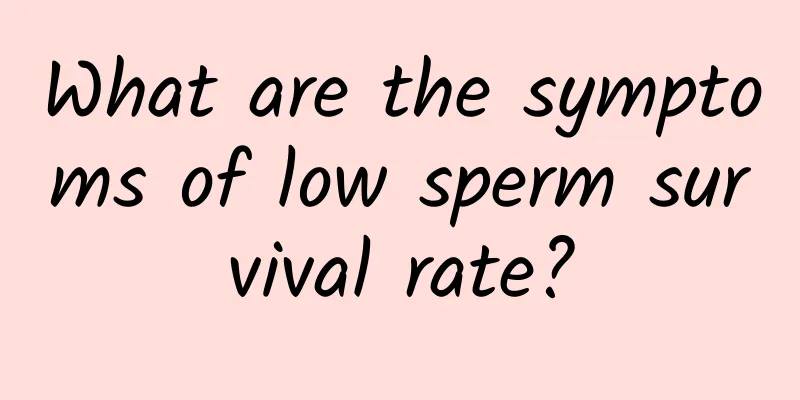How to treat aseptic chronic prostatitis?

|
Although aseptic chronic prostatitis does not involve bacterial infection, the absence of bacteria does not mean that there are no other pathogenic microorganisms, such as parasites, etc. Therefore, patients will feel some abnormalities in their bodies at the beginning, and their prostate may feel some pain. So let us understand together how to treat aseptic chronic prostatitis! The treatment goals of chronic prostatitis are mainly to relieve pain, improve urination symptoms and improve quality of life. The evaluation of treatment efficacy should be based mainly on symptom improvement. 1. General treatment Health education, psychological and behavioral counseling have a positive effect. Patients should abstain from alcohol, spicy food, hold urine, sit for long periods of time, keep warm, and strengthen physical exercise. 2. Drug treatment The most commonly used drugs are antibiotics, α-receptor blockers, herbal preparations and non-steroidal anti-inflammatory analgesics. Other drugs also have varying degrees of effectiveness in relieving symptoms. (1) Antibiotics: Currently, in the clinical practice of treating prostatitis, the most commonly used first-line drug is antibiotics, but only about 5% of patients with chronic prostatitis have clear bacterial infection. Chronic bacterial prostatitis: antibiotics are selected based on bacterial culture results and the ability of the drug to penetrate the prostate. After prostatitis is confirmed, the course of antibiotic treatment is 4 to 6 weeks, during which the patient should undergo periodic efficacy evaluation. Intraprostatic injection of antibiotics is not recommended. Chronic nonbacterial prostatitis: Antibiotic treatment is mostly empirical treatment, and the theoretical basis is to speculate that certain pathogens that are negative in routine culture cause the occurrence of this type of inflammation. Therefore, it is recommended to take oral antibiotics such as fluoroquinolone for 2 to 4 weeks, and then decide whether to continue antibiotic treatment based on the feedback of the efficacy. Only when the clinical symptoms are indeed alleviated, it is recommended to continue the use of antibiotics. The recommended total course of treatment is 4 to 6 weeks. (2) α-receptor blockers: α-receptor blockers can relax the smooth muscles of the prostate and bladder and improve lower urinary tract symptoms and pain, thus becoming a basic drug for the treatment of type II/type III prostatitis. Different α-receptor blockers can be selected according to the patient's condition. The recommended α-receptor blockers are: doxazosin, naftopidil, tamsulosin and terazosin. The results of controlled studies show that the above drugs have different degrees of improvement on patients' urination symptoms, pain and quality of life index. The above article introduces in detail how to treat aseptic chronic prostatitis. Most patients still need some general treatment, so at the beginning, you must pay attention to keeping warm. Patients must quit smoking and drinking, but they cannot hold urine for a long time or sit for a long time. |
<<: Treatment of aseptic chronic prostatitis
>>: Can aseptic chronic prostatitis be cured?
Recommend
How to regulate psychological premature ejaculation
Many men suffer from premature ejaculation during...
A man with a mole between his eyebrows
Moles are quite common. They grow on the surface ...
What to do if your skin is allergic at night? How to relieve skin allergies
Some people are prone to skin itching at night, w...
What medicine is good for sensitive glans?
First of all, we need to consider what causes the...
Causes of testicular pain after ejaculation
In fact, today's male friends may experience ...
What are the drugs for men's kidney tonic?
With the development of society, people's liv...
Can calcium supplementation improve male sexual performance?
From the perspective of traditional Chinese medic...
What is the cause of bitter mouth and bloating? Common causes of bitter mouth and bloating
Stomach bloating and bitter taste in the mouth ar...
What should I do if there is yellow discharge from the male urethra?
In fact, both men and women have urinary system d...
What causes men's feet to get cold?
Many people have cold hands and feet, especially ...
Is prostatitis difficult to treat?
Usually, prostatitis will cause frequent urinatio...
Standard weight for a 1.83 meter tall boy
Nowadays, the development of society not only nee...
What causes a small lump of flesh on the glans?
Nowadays, many office workers are not only busy w...
What to do if you don’t sweat? Four things to pay attention to when sweating normally
Many people will encounter this problem. When the...
Can men's yoga really help them lose weight?
As people's knowledge of health increases, we...









